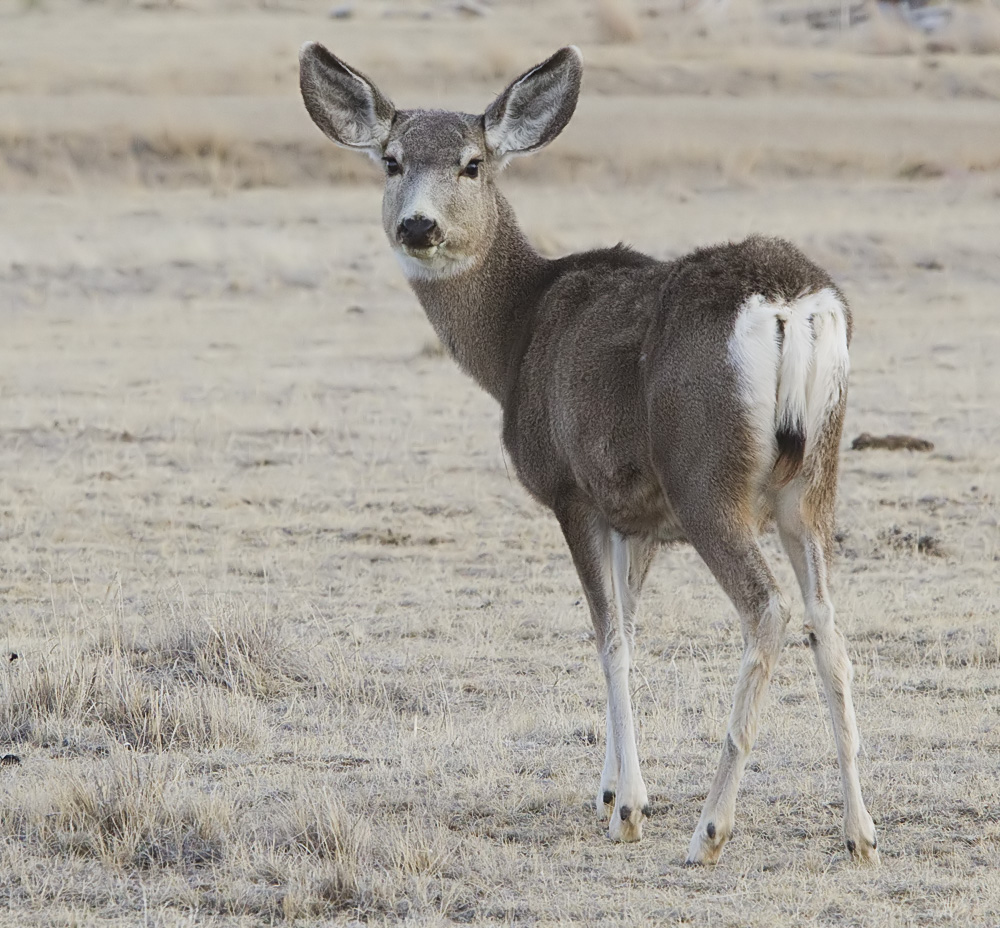 The car ahead of me stopped abruptly. As darkness descended, I could just make out the ears. The very large ears. The female mule deer is waiting on the hillside. Two smaller deer, their spots almost faded stand near her. The car finally moves ahead and I peer to both sides of the road. Yep, one more female is waiting on the south side. I stop the car, knowing my husband is in the car behind me and he will understand. I stare at them, their large brown eyes staring back. I wait patiently, not wanting to rush her, but silently inside encouraging her to join her flock. Come on, come on — you can do it! I am afraid if I decide to proceed, some other car will not see her and she will end up like so many deer you see by the side of the road. Struck by a driver in too much of a hurry racing home to see her in the dusk.
The car ahead of me stopped abruptly. As darkness descended, I could just make out the ears. The very large ears. The female mule deer is waiting on the hillside. Two smaller deer, their spots almost faded stand near her. The car finally moves ahead and I peer to both sides of the road. Yep, one more female is waiting on the south side. I stop the car, knowing my husband is in the car behind me and he will understand. I stare at them, their large brown eyes staring back. I wait patiently, not wanting to rush her, but silently inside encouraging her to join her flock. Come on, come on — you can do it! I am afraid if I decide to proceed, some other car will not see her and she will end up like so many deer you see by the side of the road. Struck by a driver in too much of a hurry racing home to see her in the dusk.
Finally she ever so carefully edges out onto the pavement. She stops briefly, looking back at me. Then carefully walks to the other side. They have all made it to safety and the herd is complete. Up the hillside they bound, disappearing into the brush.
The mule deer are on the move, as they so often migrate as winter approaches. But where there is one, there is another. I’ve become well enough acquainted with the elk and the deer, to know they stick together in large groups. So if you see one by the side of the road, often there are more. Why do they travel in packs as opposed to other critters of the mountains who travel solo?
Working at Rocky Mountain National Park a few years ago, I did a Junior Ranger program on the hoofed animals that make their home in the Rocky Mountains — the mule deer, elk, moose and sheep. I often shared a rhyme to help them to understand predators and prey — “Eyes in front, stalk and hunt, eyes on the side, run and hide…” The ungulates or hoofed mammals definitely fall into the run and hide category.
And as animals that can be frequently be hunted by mountain lion, wolves or other hunters, they have to figure out a means of protecting their survival. One of those means is by traveling in herds, most especially the does and their young. It’s a well-known fact that lions and coyotes tend to target animals that are alone, separate from a group. They are much more reluctant to go after a pack.
And so for this night, I’ve helped the pack stay together. I haven’t become one of their predators by picking off one of the mothers. Turns out safety in numbers isn’t just a good rule of thumb for people, but it works pretty well or the wildlife around us as well.

